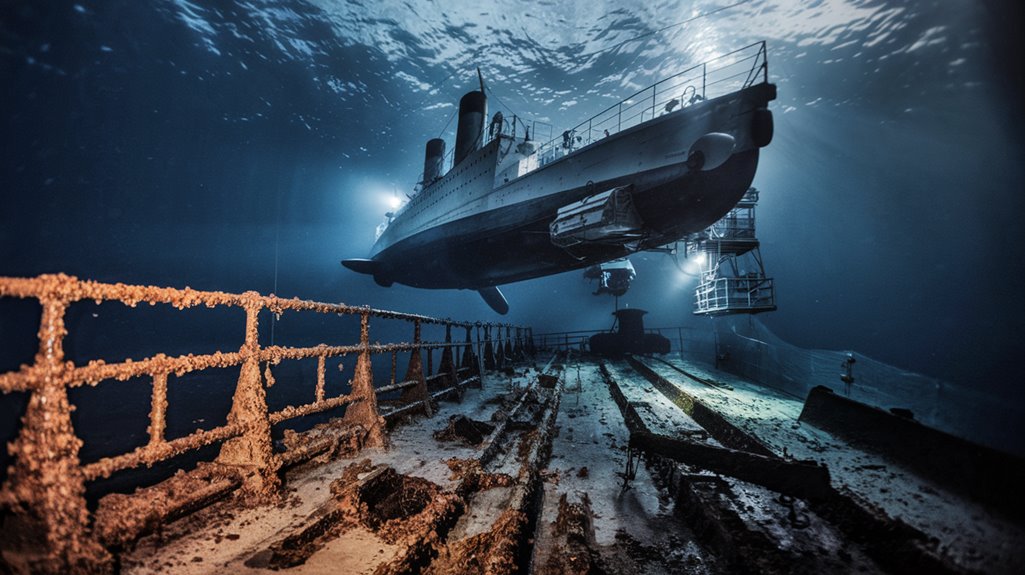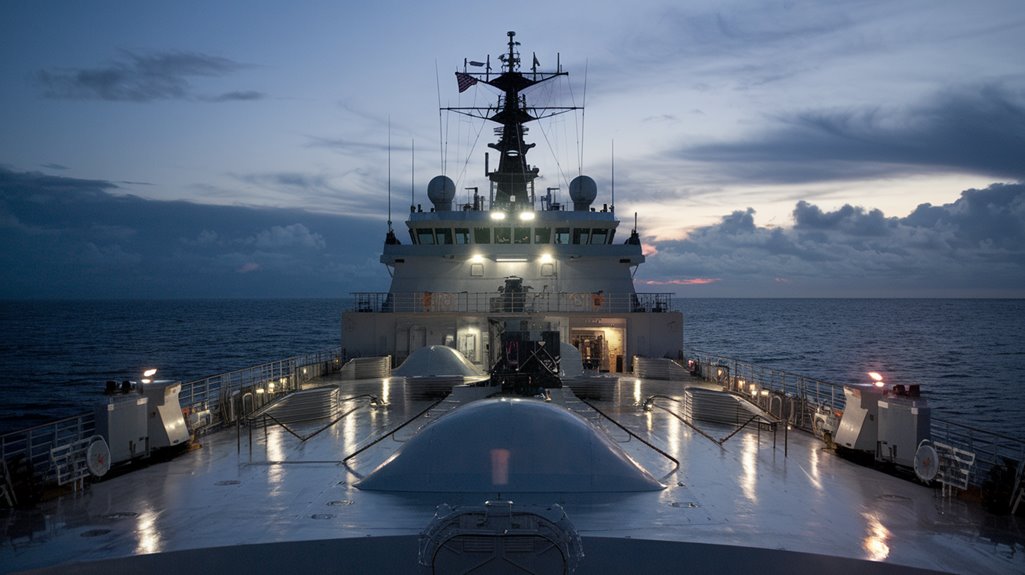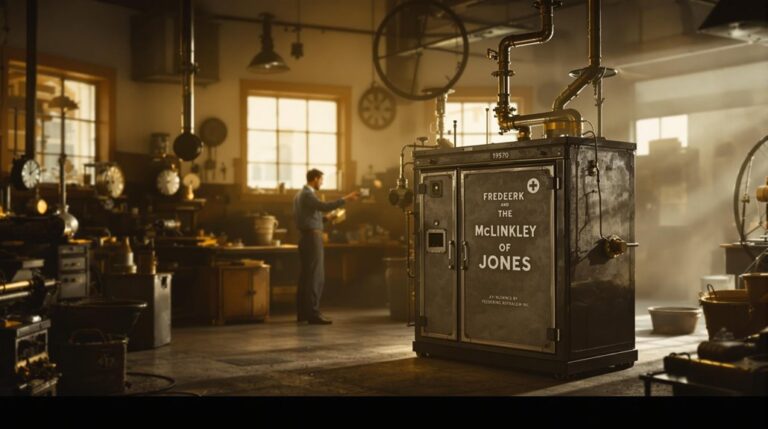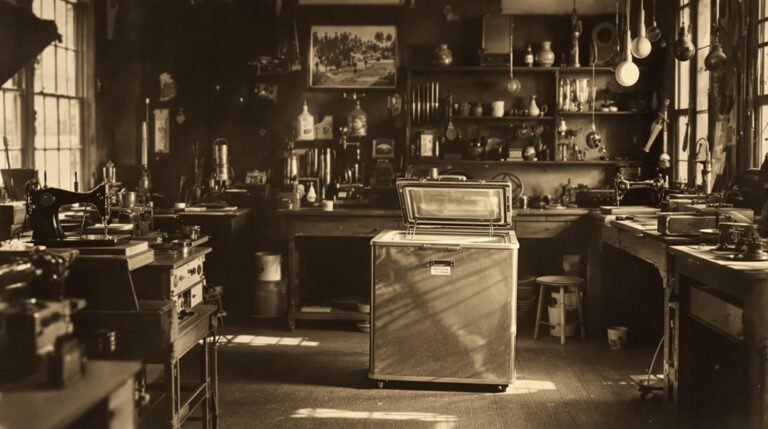Finding Titanic by Accident: The Navy’s Secret Mission
When oceanographer Robert Ballard discovered the Titanic in 1985, you'd have thought the mission was solely about finding the famous shipwreck. You'd be wrong. The truth remained hidden for over two decades: Ballard's expedition was actually a U.S. Navy operation to locate two nuclear submarines that had sunk during the Cold War. The Titanic search served as the perfect cover story, and what happened next would change maritime history in ways no one could have predicted.
The Cold War Connection: A Hidden Naval Agenda
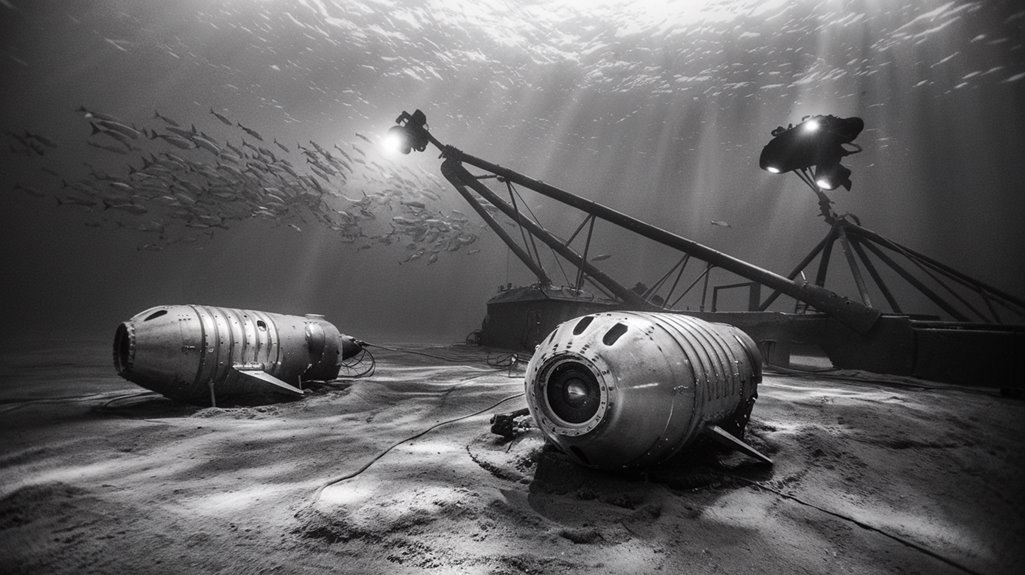
While many people know the story of the Titanic's discovery in 1985, few realize it was actually found during a classified U.S. Navy mission.
During the Cold War, naval strategy between the U.S. and Soviet Union centered on dominance of the seas, with America's Sixth Fleet patrolling the Mediterranean and the Soviets focusing on disrupting supply lines. The Soviets maintained 218 submarines in their naval arsenal for this very purpose.
The Navy's commitment to technological superiority led to the development of submarine-launched missiles as part of their Cold War arsenal.
When two nuclear submarines, USS Thresher and USS Scorpion, needed documentation of their wreckage, the Navy turned to oceanographer Dr. Robert Ballard.
They crafted a cover story using the Titanic search to mask their true intentions. The Navy's primary concern was evaluating the condition of the nuclear reactors and protecting sensitive technology from Soviet discovery.
You'll find it fascinating that this strategic deception remained classified for nearly two decades after the mission's completion.
Nuclear Submarines and National Security
Beyond their role in the Titanic's discovery, nuclear submarines serve as essential pillars of global security and nuclear deterrence. You'll find these vessels operating as powerful deterrents, with just one strategic submarine carrying enough firepower to rank as the world's sixth-largest nuclear power.
The evolution of submarine technology advancements has made these vessels nearly impossible to detect, allowing them to maintain a 24/7 presence underwater without refueling. This stealth capability forms the cornerstone of America's nuclear deterrence strategy. Attack submarines conduct covert missions that keep potential adversaries at risk. Commander Robert Ballard's expertise with these vessels led to the discovery of two lost submarines before finding the Titanic.
Currently, you're witnessing this importance through the Navy's $130 billion investment in twelve Columbia class submarines. While these programs face construction and cost challenges, they remain vital for maintaining peace by demonstrating a credible defense capability that helps prevent global conflicts.
Robert Ballard's Double Mission
A secret double mission launched Robert Ballard's famous discovery of the Titanic. When you look at Ballard's motivation, it wasn't just about finding the legendary shipwreck.
In 1982, he approached the U.S. Navy for funding to develop submersible technology, but there was a catch: he'd first need to locate two missing nuclear submarines, the USS Thresher and USS Scorpion.
You might be surprised to learn that finding the Titanic wasn't even the primary goal. After completing the classified submarine searches, Ballard had just 12 days left to pursue his dream of locating history's most famous shipwreck. The joint US-France expedition proved to be a remarkable collaboration in deep-sea exploration.
Using lessons learned from the submarine searches and his innovative Argo robot, he succeeded in locating the Titanic on September 1, 1985, over two miles beneath the Atlantic. The discovery fulfilled a childhood dream sparked by Walt Disney's film, which had originally inspired Ballard to pursue ocean exploration.
Following the Trail of Debris
Three essential discoveries from Ballard's submarine searches shaped his strategy for finding the Titanic. Through debris analysis of the Thresher and Scorpion wrecks, he learned that searching for scattered items rather than the ship itself would be more effective.
Jean-Louis Michel worked alongside Ballard to provide crucial diving expertise to the mission.
The debris field, spanning approximately 5×3 miles, became his primary focus.
The search was initially challenging, as the first sonar run passed within several hundred yards of the Titanic without detecting it. Instead of relying on sonar, you'll find that Ballard's team used Argo's cameras to distinguish man-made objects from natural formations on the seafloor. Their persistence paid off at 12:48 am on September 1, 1985, when they spotted a boiler matching 1911 photographs.
This discovery led them to the wreck's two main sections, lying 2,000 feet apart. Today, while the bow shows remarkable wreck preservation, the stern remains heavily damaged, with thousands of artifacts scattered between them.
The Unprecedented Discovery
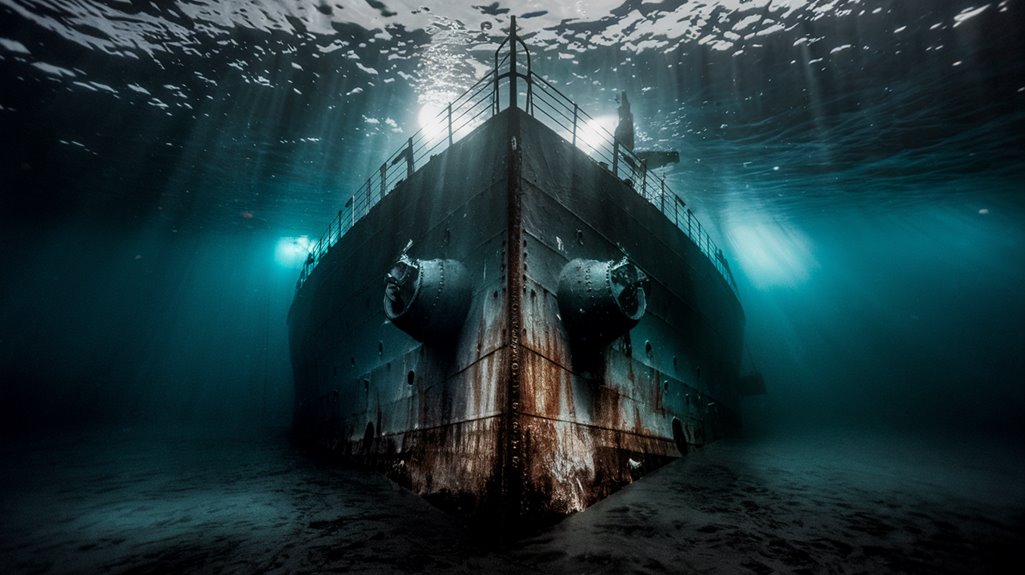
Robert Ballard's discovery of the Titanic carried a surprising secret that wouldn't come to light for decades.
What you mightn't know is that this remarkable ocean exploration success was actually a cover for a classified Navy mission. The unforeseen consequences of finding two submarine wrecks first gave Ballard the expertise he needed to locate history's most famous shipwreck. The Navy's primary focus was investigating the tragic losses of the USS Thresher and Scorpion, which had claimed over 200 lives combined.
- The discovery occurred at 12:48 AM on September 1, 1985, when Argo spotted debris
- Ballard and Michel confirmed their find by identifying a distinctive 1911 boiler
- The hull was found split in two pieces with a surrounding debris field
- The Navy's involvement remained classified until Ballard's 2008 revelation to National Geographic
You're witnessing a perfect example of how military objectives unexpectedly led to one of the greatest maritime discoveries in history. After 111 years since the tragic sinking, the Titanic continues to reveal new discoveries that reshape our understanding of this historic disaster.
Revealing the Truth: Declassified After 23 Years
For twenty-three years, the U.S. Navy maintained strict silence about their role in finding the Titanic, leaving the public unaware of the mission's true purpose.
The secrecy implications were significant, as the Navy worried that publicity might expose their covert investigation of two nuclear submarines.
The truth finally emerged in 2008 when Robert Ballard revealed the classified details to National Geographic.
You'd be surprised to learn that the mission outcomes were twofold: not only did the Navy confirm there wasn't any Soviet involvement in the submarines' sinking, but they also verified the nuclear reactors weren't leaking.
DSV Alvin submarine enabled the first crewed expedition to explore the Titanic wreck in 1986.
The discovery of the Titanic was, remarkably, just a bonus achievement with the remaining time and resources.
The Navy initially gave Ballard 12 days to search for the Titanic after completing the submarine investigations.

